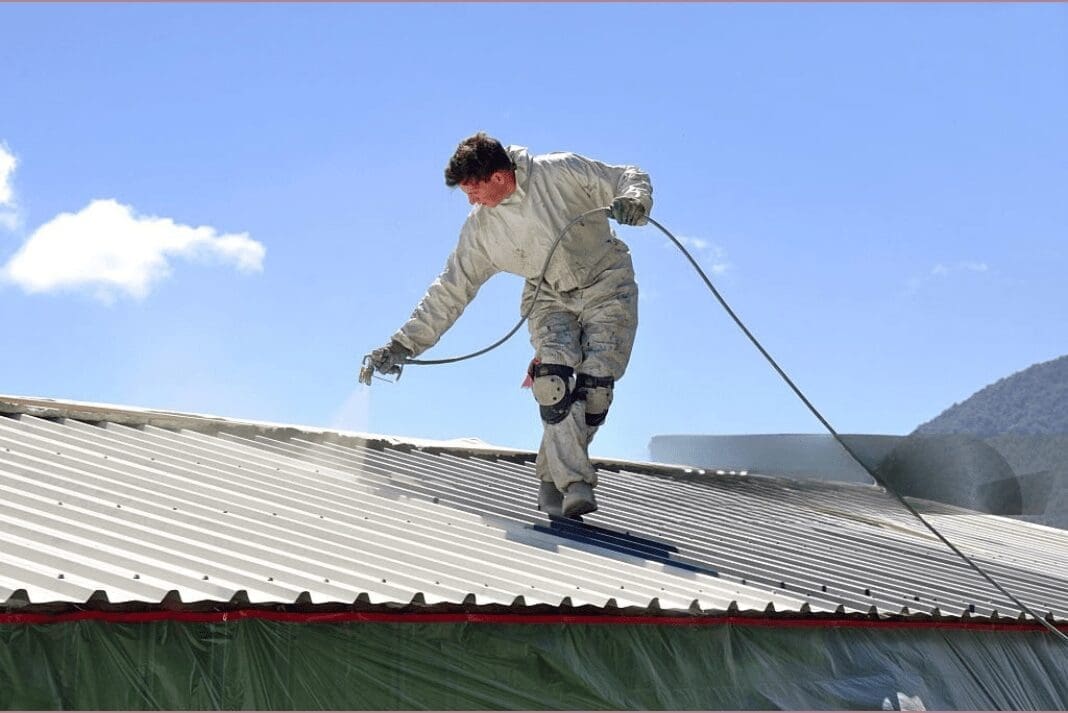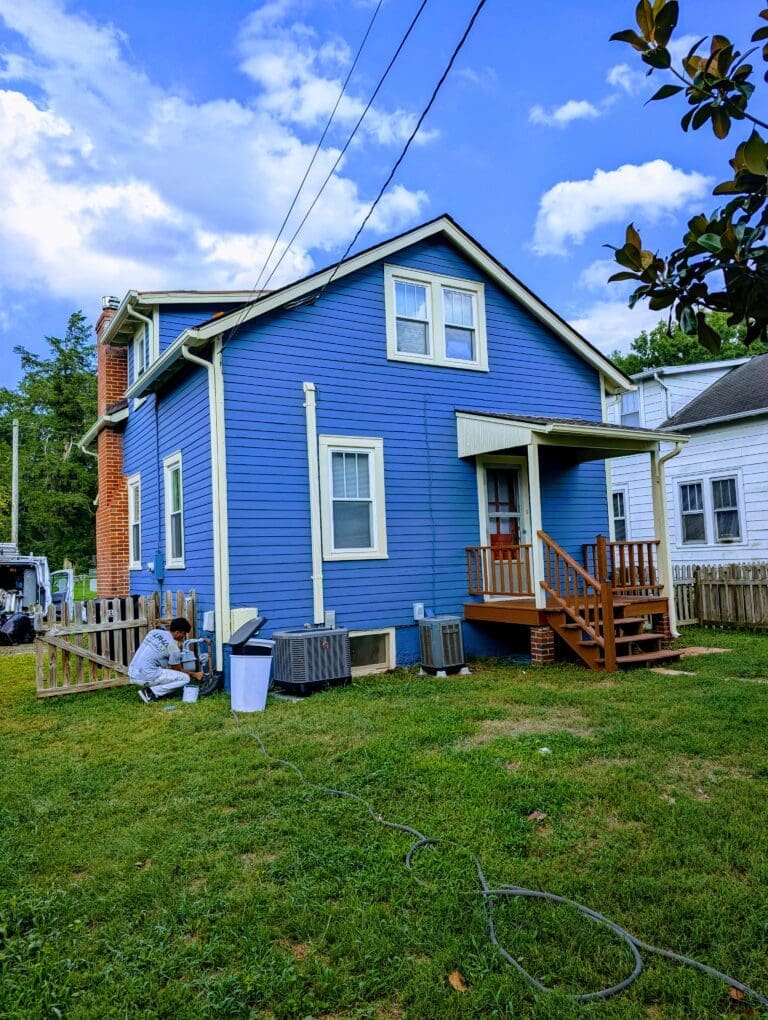Roof Painting: Why It’s More Important Than You Think
Homeowners often focus on walls, trim, and siding when thinking about exterior maintenance, but the roof plays an equally crucial role in both aesthetics and protection. Beyond curb appeal, roof painting offers a layer of defense against weather, UV damage, and premature aging. Whether dealing with metal, tile, or asphalt shingles, the right coating can significantly extend the roof’s lifespan while improving energy efficiency.
Table of Contents
The Benefits of Roof Painting
Extends Roof Longevity
A roof takes the brunt of weather exposure, from scorching sun to heavy rain and freezing temperatures. Over time, this constant assault leads to wear and degradation. A high-quality roof paint or coating acts as a shield, sealing small cracks and preventing water infiltration. This added protection slows down the aging process, reducing the risk of leaks and structural issues.
Improves Energy Efficiency
A reflective roof coating can lower indoor temperatures by reducing heat absorption. Lighter-colored or specially formulated paints reflect solar radiation instead of absorbing it, leading to cooler attic spaces and reduced strain on air conditioning systems. In hot climates, this can translate into noticeable savings on energy bills.
Protects Against Mold, Mildew, and Algae
Moisture accumulation on a roof creates an ideal environment for mold, mildew, and algae growth. Left unchecked, these elements can lead to staining, wood rot, and even structural damage. Many modern roof paints include antimicrobial properties to prevent organic growth, keeping the roof clean and reducing maintenance efforts.
Enhances Curb Appeal and Property Value
An aging, faded roof can make an otherwise well-maintained home look neglected. A fresh coat of paint instantly revitalizes its appearance, making the home stand out in the neighborhood. This can be particularly valuable for homeowners looking to sell, as a well-kept roof signals proper upkeep to potential buyers.
Provides Additional Waterproofing
Certain roof coatings, such as elastomeric or silicone-based options, offer superior waterproofing capabilities. These coatings expand and contract with temperature fluctuations, ensuring a flexible, watertight barrier that prevents leaks. This is especially beneficial for older roofs with minor wear that don’t yet require a full replacement.
Choosing the Right Roof Paint and Coatings
The type of roof material determines which paint or coating will provide the best results. Not all products adhere well to every surface, and selecting the wrong one can lead to peeling, cracking, or poor performance.
Metal Roofs
Metal roofs benefit from acrylic-based, rust-inhibiting coatings that prevent oxidation. Reflective options help reduce heat absorption, making them a top choice in warm climates.
Asphalt Shingles
Traditional asphalt shingles require breathable coatings to avoid trapping moisture. Elastomeric and acrylic coatings work well, providing flexibility without suffocating the material.

Tile Roofs
Clay or concrete tiles need permeable coatings that allow moisture to escape while offering UV resistance. Specialized tile sealants enhance durability without altering the roof’s ability to breathe.
Flat Roofs
Flat roofing systems often use rubber, TPO, or modified bitumen, requiring highly flexible coatings like silicone or elastomeric solutions. These options ensure long-term water resistance and withstand pooling water.
Proper Preparation for Roof Painting
Skipping preparation can lead to poor adhesion and premature coating failure. A professional approach ensures the paint bonds properly and delivers long-lasting protection.
Cleaning the Surface
Dirt, debris, moss, and algae must be thoroughly removed before painting. Pressure washing or using a specialized roof cleaner ensures a smooth, contaminant-free surface.
Repairing Damage
Cracks, loose shingles, rust spots, or small holes should be addressed before applying paint. Patching up imperfections prevents underlying issues from worsening over time.
Applying Primer (If Needed)
Certain materials, especially metal or porous surfaces, require a primer to improve adhesion. This step helps prevent peeling and ensures even paint coverage.
Selecting the Right Application Method
Sprayers provide the most even coverage for large roofs, while rollers or brushes work better for detailed areas. Professional painters often use a combination of techniques to achieve a flawless finish.
Common Mistakes to Avoid
Even high-quality paint won’t last if applied incorrectly. Avoiding these mistakes ensures the best outcome:
- Not all exterior paints work for roofing. Choosing a paint not designed for high-exposure surfaces leads to rapid deterioration.
- Painting over dirt, mold, or a damaged surface leads to adhesion failure.
- High heat, strong winds, or rainy conditions can interfere with the drying process, affecting performance.
- Some coatings create an airtight seal, which can trap moisture and damage the roof structure.
When to Consider Roof Painting Over Replacement
Painting isn’t a substitute for replacing a severely damaged or aging roof. However, if the roof is structurally sound but showing signs of wear, painting can be a cost-effective alternative to premature replacement. If issues like widespread curling shingles, sagging areas, or significant water damage are present, a full roof replacement is the better choice.
Hiring a Professional vs. DIY
While some homeowners may attempt a DIY roof painting project, working with a professional ensures the job is done safely and correctly. Professionals have access to specialized equipment, high-quality coatings, and the expertise to identify potential roofing issues before they escalate. They also follow safety protocols, preventing falls and other risks associated with working at heights.
Final Thoughts
Roof painting goes beyond aesthetics—it’s a practical investment in protecting and extending the life of your home’s most critical structure. The right coating improves durability, boosts energy efficiency, and enhances curb appeal. Whether refreshing an older roof or adding an extra layer of protection, a well-executed paint job offers long-term benefits that homeowners shouldn’t overlook.
For those considering a roof painting project, consulting with an expert ensures the best results. A professional evaluation can determine the right approach based on roof type, climate conditions, and long-term maintenance goals.







